
Fort Dearborn was a United States fort, first built in 1803 beside the Chicago River, in what is now Chicago, Illinois. It was constructed by U.S. troops under Captain John Whistler and named in honor of Henry Dearborn, then United States Secretary of War. The original fort was destroyed following the Battle of Fort Dearborn during the War of 1812, and a replacement Fort Dearborn was constructed on the same site in 1816 and decommissioned by 1837.

A Century of Progress International Exposition, also known as the Chicago World's Fair, was a world's fair held in the city of Chicago, Illinois, United States, from 1933 to 1934. The fair, registered under the Bureau International des Expositions (BIE), celebrated the city's centennial. The theme of the fair was technological innovation, and its motto was "Science Finds, Industry Applies, Man Adapts", trumpeting the message that science and American life were wedded. Its architectural symbol was the Sky Ride, a transporter bridge perpendicular to the shore on which one could ride from one side of the fair to the other.

The Museum of Science and Industry (MSI) is a science museum located in Chicago, Illinois, in Jackson Park, in the Hyde Park neighborhood between Lake Michigan and The University of Chicago. It is housed in the Palace of Fine Arts from the 1893 World's Columbian Exposition. Initially endowed by Julius Rosenwald, the Sears, Roebuck and Company president and philanthropist, it was supported by the Commercial Club of Chicago and opened in 1933 during the Century of Progress Exposition.

Charles Gates Dawes was an American diplomat and Republican politician who was the 30th vice president of the United States from 1925 to 1929 under Calvin Coolidge. He was a co-recipient of the Nobel Peace Prize in 1925 for his work on the Dawes Plan for World War I reparations.

William Frederick Friedman was a US Army cryptographer who ran the research division of the Army's Signal Intelligence Service (SIS) in the 1930s, and parts of its follow-on services into the 1950s. In 1940, subordinates of his led by Frank Rowlett broke Japan's PURPLE cipher, thus disclosing Japanese diplomatic secrets before America's entrance into World War II.

Elizebeth Smith Friedman was an American cryptanalyst and author who deciphered enemy codes in both World Wars and helped to solve international smuggling cases during Prohibition. Over the course of her career, she worked for the United States Treasury, Coast Guard, Navy and Army, and the International Monetary Fund. She has been called "America's first female cryptanalyst".
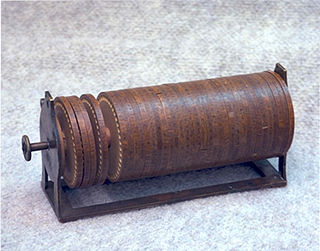
The Jefferson disk, also called the Bazeries cylinder or wheel cypher, was a cipher system commonly attributed to Thomas Jefferson that uses a set of wheels or disks, each with letters of the alphabet arranged around their edge in an order, which is different for each disk and is usually ordered randomly.
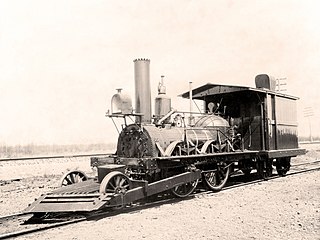
John Bull is a historic British-built railroad steam locomotive that operated in the United States. It was operated for the first time on September 15, 1831, and became the oldest operable steam locomotive in the world when the Smithsonian Institution ran it under its own steam in 1981. Built by Robert Stephenson and Company, it was initially purchased by and operated for the Camden and Amboy Railroad, the first railroad in New Jersey, which gave it the number 1 and its first name, "Stevens". The C&A used it heavily from 1833 until 1866, when it was removed from active service and placed in storage.

The Sky Ride was an attraction built for the Century of Progress 1933 World's Fair in Chicago, Illinois. It was a transporter bridge designed by the bridge engineering firm Robinson & Steinman that ferried people across the lagoon, Burnham Harbor, in the center of the fair. It was located near Northerly Island, but was demolished after the Fair, having carried 4.5 million passengers. The Sky Ride had a 1,850-foot (560 m) span and two 628-foot (191 m) tall towers, making it the most prominent structure at the fair. Suspended from the span, 215 feet (66 m) above the ground, were rocket-shaped cars, each carrying 36 passengers.

Rufus Cutler Dawes was an American businessman in oil and banking from a prominent Ohio family. He and his three brothers all became nationally known. In the 1920s he served as an expert on the commissions to prepare the Dawes Plan and the Young Plan to manage German reparations to the Allies after World War I.
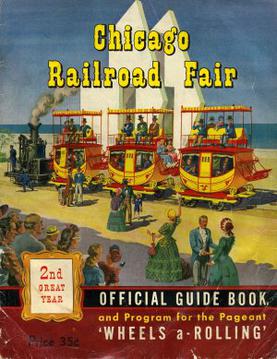
The Chicago Railroad Fair was an event organized to celebrate and commemorate 100 years of railroad history west of Chicago, Illinois. It was held in Chicago in 1948 and 1949 along the shore of Lake Michigan and is often referred to as "the last great railroad fair" with 39 railroad companies participating. The board of directors for the show was a veritable "Who's Who" of railroad company executives.
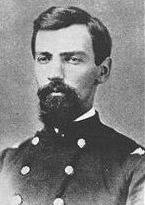
Rufus R. Dawes was a military officer in the Union Army during the American Civil War. He used the middle initial "R" but had no middle name. He was noted for his service in the famed Iron Brigade, particularly during the Battle of Gettysburg. He was a post-war businessman, Congressman, and author, and the father of four nationally known sons, one of whom, Charles G. Dawes, won the Nobel Peace Prize and served as Vice President of the United States, and of two daughters. He was himself a great-grandson of William Dawes, who alerted colonial minutemen of the approach of the British Army prior to the Battles of Lexington and Concord at the outset of the American Revolution, and a maternal great-grandson of the Rev. Manasseh Cutler, who was instrumental in adoption of the Northwest ordinance of 1787, led the formation of the Ohio Company of Associates, and became "Father of Ohio University".
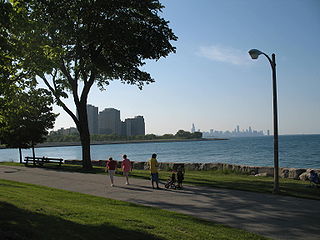
Burnham Park is a public park located in Chicago, Illinois. Situated along 6 miles (9.7 km) of Lake Michigan shoreline, the park connects Grant Park at 14th Street to Jackson Park at 56th Street. The 598 acres (242 ha) of parkland is owned and managed by the Chicago Park District. It was named for urban planner and architect Daniel Burnham in 1927. Burnham was one of the designers of the 1893 World's Columbian Exposition.

The Wieboldt-Rostone House is a historic building in the Century of Progress Architectural District in Beverly Shores, Indiana. The home was built in 1933, framed in steel, and clad with an artificial stone called Rostone. Billed as never needing repairs, it only lasted without renovations until the 1950s.

Both the Cypress Log Cabin and the Cypress Guest house are historic buildings in the Century of Progress Architectural District in Beverly Shores, Indiana. The houses were sponsored by Southern Cypress Manufacturer's Association, Jacksonville, Florida. The Cypress Cabin was purchased by the Zimmernam Estate represented by Zimmerman, Saxe and MacBride, Chicago architects. It was planned to move the house to St. Joseph, Michigan, where it was to be a summer home near the Bolton exhibit building of the 1893 Columbian Exposition. The move included the Cabin, Guest House and other landscape elements. That move never happened and Robert Bartlett trucked the Cabin and Guest House to Beverly Shores. Bartlett owned the property until 1942, when sold it to Ida J. Osterburg. The house changed owners several times, until it was purchased by the National Park Service in October 1970, becoming part of Indiana Dunes National Lakeshore.

Henry May Dawes was an American businessman and banker from a prominent Ohio family. He served as a United States Comptroller of the Currency from 1923 to 1924 and also worked as an executive in the oil industry.

"Colonel" George Fabyan was a millionaire businessman who founded a private research laboratory. Fabyan's laboratory pioneered modern cryptography & was the forerunner of the NSA. The National Security Agency has recognized Riverbank Laboratories as the birthplace of U.S. cryptology.

Ephraim Cutler Dawes was a major in the 53rd Ohio Infantry and brevet lieutenant-colonel, United States Volunteers, during the American Civil War. Dawes was present at the Battle of Shiloh and Battle of Vicksburg, among others, serving under Ulysses S. Grant and William T. Sherman. One of his notable acts occurred during battle, where Dawes disobeyed and cursed an officer who had become scared and disoriented. While serving with Sherman during his march to Atlanta Dawes was seriously wounded in his lower jaw in what would be his last battle, subsequently being honorably discharged in 1864.
Beatrice Sophia Steinfeld Levy was an American printmaker and painter, draftsman, and instructor.
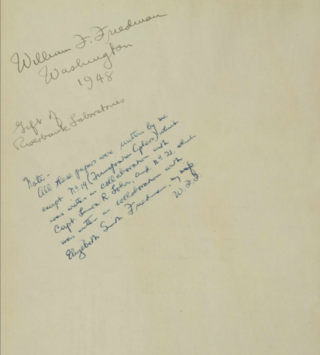
The Riverbank Publications is a series of pamphlets written by the people who worked for millionaire George Fabyan in the multi-discipline research facility he built in the early 20th century near Chicago. They were published by Fabyan, often without author credit. The publications on cryptanalysis, mostly written by William Friedman, with contributions from Elizebeth Smith Friedman and others, are considered seminal in the field. In particular, Publication 22 introduced the Index of Coincidence, a powerful statistical tool for cryptanalysis.


















